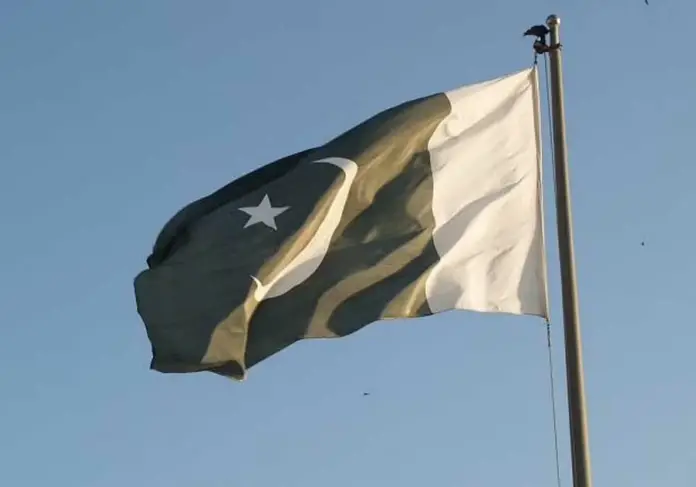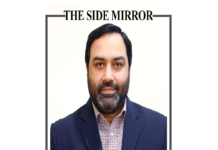Political stability and security are tenuous in Pakistan, and real GDP will contract mildly in fiscal year 2023/24. Pakistan will conduct elections by October 2023, at which EIU expects the ruling Pakistan Muslim League (Nawaz) coalition, led by the incumbent prime minister, Shehbaz Sharif, to win, despite widespread discontent with the government’s austerity measures. The opposition Pakistan Tehreek-e-Insaf party, will lose with the possible incarceration of chairman PTI. Domestic protests will intensify but will be curbed swiftly. Pakistan secured a nine-month loan package from the IMF, which will help the country to stave off a default on sovereign debt obligations over 2023-24, amid persistent balance-of-payment and fiscal strains. China will remain a major strategic and financial ally of Pakistan, while relations with India will remain strained.
Pakistan serves as an exceptional case study for political scientists, shedding light on the unfortunate prevalence of corrupt politicians and authoritarian regimes in general. Scholars widely concur that while representative democracy is not without its flaws, it offers a higher likelihood of long-term political stability compared to alternative systems. However, it is essential to acknowledge that not everyone subscribes to this perspective. Indeed, some view democratic systems as inherently unstable, citing their fractious nature, unpredictability, and frequent swings of power.
Indeed, if the transition from PTI government to PDM government were not challenging enough, Pakistan now finds itself in the midst of perhaps its most serious economic crisis in a quarter century.
This crisis is primarily centered around debt as the proximate cause. Pakistan finds itself burdened with billions of dollars in debt owed to creditors. The situation was further exacerbated when Russia invaded Ukraine, causing a surge in the dollar price of fuel, which constitutes a significant portion of Pakistan’s import expenditure. Consequently, the value of the Pakistani currency has plummeted by 30 percent since 2021, leading to a sharp increase in the cost of all imports, including the existing debt obligations. This unfortunate combination has set off a harmful cycle, where the depreciation of the currency keeps worsening, leading to an escalation in debt levels. As a result, there is a growing lack of confidence in Pakistan’s ability to repay its debts, further adding to the complexity of the crisis.
In an optimistic scenario, relying on financial aid from entities like the IMF, Saudi Arabia, or China might offer temporary relief, but it merely postpones Pakistan’s debt problem. The country’s dependence on bailouts from stronger or wealthier nations remains unchanged. The elite class and entrepreneurial middle class evade taxes, while wealth accumulation centers around dominating rent-seeking sectors like land and sugar. Successive governments have favored short-term populist measures, such as artificially inflating the exchange rate (PML-N) or deflating fuel prices (PTI) to sustain a consumption-driven economy. However, the consequences of such actions have become apparent, and Pakistan must now confront the bill for these ill-advised policies.
It is clear that relying on a superpower’s invasion of Afghanistan to foster economic development is an unsustainable approach. Pakistan’s progress and the welfare of its citizens cannot indefinitely hinge on the benevolence of major powers or the unpredictability of geopolitical alliances.
The undeniable intertwining of Pakistan’s political and economic crises is apparent. Although political unrest and regime changes might not have directly caused the economic challenges, they have undoubtedly exacerbated the situation by eroding investor and creditor confidence in Pakistan’s commitment and responsibility as a governing body. During a critical period where unity and cooperation are essential, the country’s political elite seems preoccupied with self-serving power struggles.
Moreover, Pakistan is contending with the profound consequences of the climate crisis, evident through scorching heatwaves, rapidly melting glaciers, dwindling rivers, and severe air pollution. The nation’s stability is under threat due to feeble institutions and the prevalence of unconventional politics, compounded by the fusion of street politics and the influence of new media.
On the security front, Pakistan encounters internal risks posed by Islamist militants and Baloch separatists, alongside external challenges arising from an increasingly assertive New Delhi.
Regrettably, the country continues to grapple with poverty, leaving a significant portion of its population without access to basic necessities such as clean drinking water and electricity. Once ranked among the region’s most affluent nations on a per capita basis, Pakistan now lags behind India and Bangladesh in terms of economic development.
With nearly half of its population being younger than 25, the prospects for the nation’s youth appear uncertain and daunting. The political landscape in Pakistan has long been plagued by a game of musical chairs, with politicians and their opponents continuously vying for power. Unfortunately, this political development does not prioritize the well-being of the people or the country itself. Instead of focusing on the nation’s interests, Pakistani politicians often prioritize their own personal gains, disconnected from the needs of the nation. The prevalence of dynastic politics further compounds the issue, as leaders manipulate the public and use their positions for their benefit.
This chronic political unrest has been detrimental to Pakistan’s economy throughout its history. Alongside natural disasters and international politics, the instability in governance has severely damaged the country’s institutional structure. Economic institutions have suffered significantly due to this political uncertainty, prompting leaders to adopt short-term policies to retain their power. It has been observed that economic growth tends to fare better under military regimes than democratic ones, leading to a lack of stable growth trajectory over the years.
To address this problem, the military emerged as a perceived solution. The military, being professionally regarded as one of the country’s best institutions, was seen as a guardian of Pakistan’s territorial and ideological frontiers. Its merit-based induction and promotion system, coupled with exceptional training and conduct, further bolstered its reputation. Believing they had the country’s best interests at heart, the military assumed responsibility for bringing about the necessary reforms to drive economic development. Military dictators often justified removing elected governments, claiming that they were harming the economy. This apparent belief in providing transparency, continuity, consistency, and predictability made them think they were the sole providers of the enabling factors needed by the markets.
However, relying on the military as a solution to Pakistan’s political and economic challenges raises concerns. A market-based economy thrives on stability and certainty, which political uncertainty and military intervention can disrupt. It is essential to find more sustainable and democratic ways to address the issues of political unrest and economic instability in the country. This would require the politicians to shift their focus from personal interests to the genuine welfare of the people and the nation as a whole. Only then can Pakistan work towards a stable growth trajectory and create a prosperous future for its citizens.







